PRINCETON, NJ -- Americans have in recent weeks become more upbeat about their standard of living, more positive about the U.S. economy, and slightly less likely to report worrying about money. Yet Gallup has not found (so far) a concomitant increase in bottom-line variables that are most important to the economy. Gallup's measure of consumers' daily spending continues to go down, and Gallup's measure of net hiring shows that employees around the country remain pessimistic about their companies' hiring.
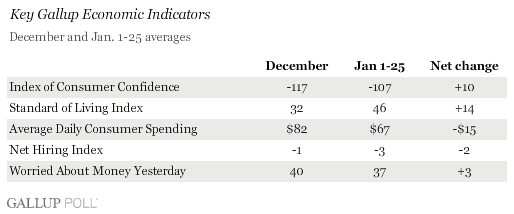
Standard of Living
Gallup's Standard of Living Index, which measures consumers' ratings of both their current and future standard of living, hovered around 30 in early December, but in mid-December it began to rise, reaching 40 right after Christmas. It remained above 40 until Barack Obama's inauguration, when it peaked at 55. Since then, the Standard of Living Index has slipped back to about 40, but is still well above where it stood six weeks ago.
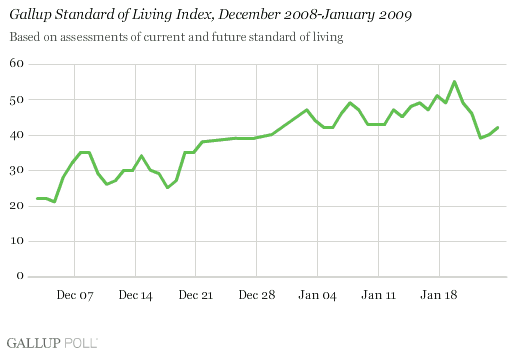
Personal Finance
The percentage of Americans saying they worried about money "yesterday" -- a value that in general is fairly stable -- reached its 2008 peak of 44% in Gallup's 14-day rolling average in mid-October, and was at roughly the 40% level at the beginning of December. Then, by the beginning of the new year, the percentage of Americans worrying about money fell to 36%, where it stayed for the first half of January, before rising slightly to 37% over the last week or so -- but still below where it was in early December.
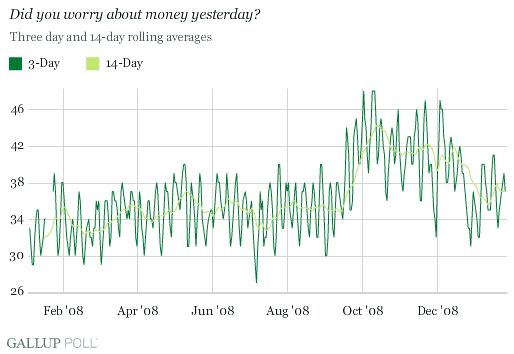
Consumer Confidence
Gallup's tracking of consumer confidence has shown more fluctuation, but is still more positive in recent weeks than it was in December. Consumer confidence plummeted in mid-September (along with the stock market) as the burgeoning financial crisis burst into the news. This drop was followed by more fluctuations. By early December, consumer confidence was almost as low as it had been at any time in 2008. However, similar to Americans' perceptions of their own standard of living and worry about money, public confidence in the economy started to expand in mid-December. It crested around New Year's, fell back somewhat, but then has increased again in recent weeks. Overall, consumer confidence has been higher in January (so far) than in December.
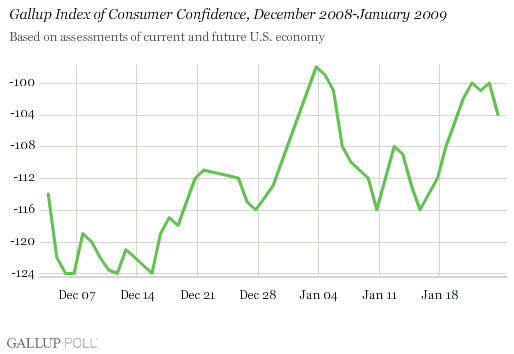
Attitudes vs. Action
The finding that consumer psychology has improved in January gives rise to several key questions. Does the increase in any way suggest a pending improvement in the aspects of the U.S. economy that reflect consumer activity? And, could it be that Americans' more positive attitudes about economic matters reflect early indications of an improving economy?
Consumer psychology is arguably most important to the degree that it relates to consumer behavior. And so far, at any rate, Gallup has not seen an upward shift in consumers' most important consumer activity -- retail spending. At the same time that Americans grew more positive about their standard of living and the economy (starting around mid-December), they did not report a significantly higher level of daily retail spending. In fact, consumer spending has deteriorated over most of this period as measured by Gallup's Monitor of Consumer Spending. (There has been a slight uptick in consumer spending in the last several days, but it will take longer to see whether this represents a reversal in the overall downward trend.)
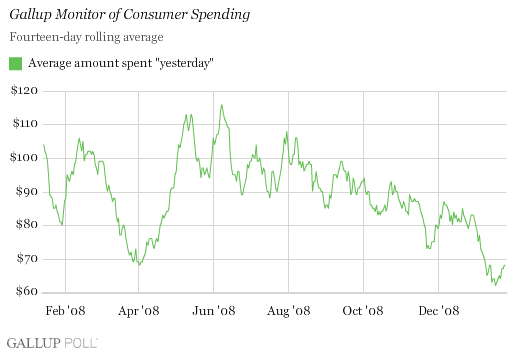
Secondarily, Americans' somewhat brighter economic outlook does not appear to be based on some insider perception by American workers that job conditions at their places of employment are improving. In fact, Gallup's daily measure of net hiring activity shows a continuing decrease in employees' reports of hiring at their places of employment, although there has been a slight uptick in recent days. Thus, the improved consumer attitudes about the standard of living and the economy, and the decrease in worry about money, are occuring despite the fact that American workers are seeing no improvement in the already bleak hiring trends at their workplaces.
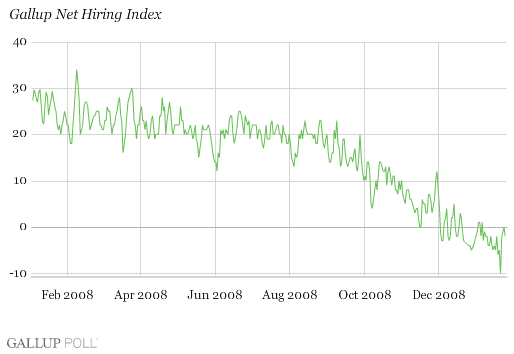
At different points in 2008, Gallup determined that gas prices and strong gyrations in the stock market were significant contributors to changes in consumer confidence, both positively and negatively. However, neither appears to be a major factor in the latest consumer rebound. Both gas prices and the stock market have been fairly flat, or worsening, over the past six weeks -- not improving.
Another possible explanation for the upward trend in consumer psychology is the changing political framework in the country since the election of Obama in November. With Obama's saying "change has come to America," his supporters may have enjoyed newfound optimism about the economy, thus diminishing or alleviating their own financial concerns.
The accompanying charts show Gallup's measures of consumer confidence and standard of living broken out by partisanship.
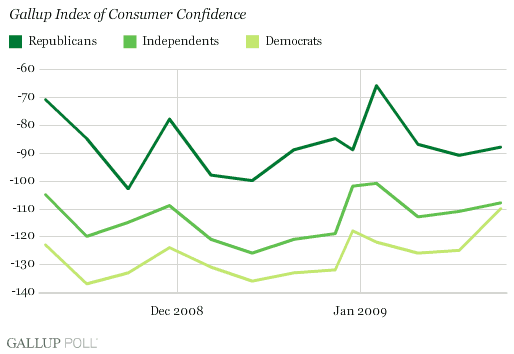

These data suggest that some of the positive increase in consumer confidence and most of the recent increase in positivity concerning the standard of living come from independents and Democrats.
By contrast, worry about money has fluctuated among all three party groups, with Republicans showing as much decline in worry as Democrats did as of late December.
Implications
There is no question that Americans' views of the economy and their own personal standard of living, as well as their daily worries about money, have moved in a positive direction in recent weeks. This suggests that the end-of-month consumer confidence indices to be reported in the next several days by the Conference Board and the University of Michigan/Reuters should show some upward movement.
At the same time, Gallup's daily monitoring of consumer spending shows no concomitant rise to go along with the more positive attitudes; in fact, self-reported spending has generally been deteriorating all month.
Thus, there is no evidence yet to suggest that the uptick in consumer psychology is translating into actual economic activity.
Gallup analysis suggests that some of the increase in consumer psychology could be owing to the political impact of Obama's pending inauguration on Jan. 20 on Democrats and, to some degree, independents. The possibility that the rise in positivity is partly political in origin rather than reflecting economic matters per se does not in and of itself negate the possiblity that ultimately there will be a rise in consumer economic activity. Regardless of the cause, if a consumer feels better and more positive, it is probable that he or she will feel better about spending money.
Still, no such pattern is detectable so far in Gallup's data.
Survey Methods
Gallup is interviewing no fewer than 1,000 U.S. adults nationwide each day during 2008 and 2009 as part of its daily tracking program.
Interviews are conducted with respondents on land-line telephones (for respondents with a land-line telephone) and cellular phones (for respondents who are cell-phone only).
In addition to sampling error, question wording and practical difficulties in conducting surveys can introduce error or bias into the findings of public opinion polls.
